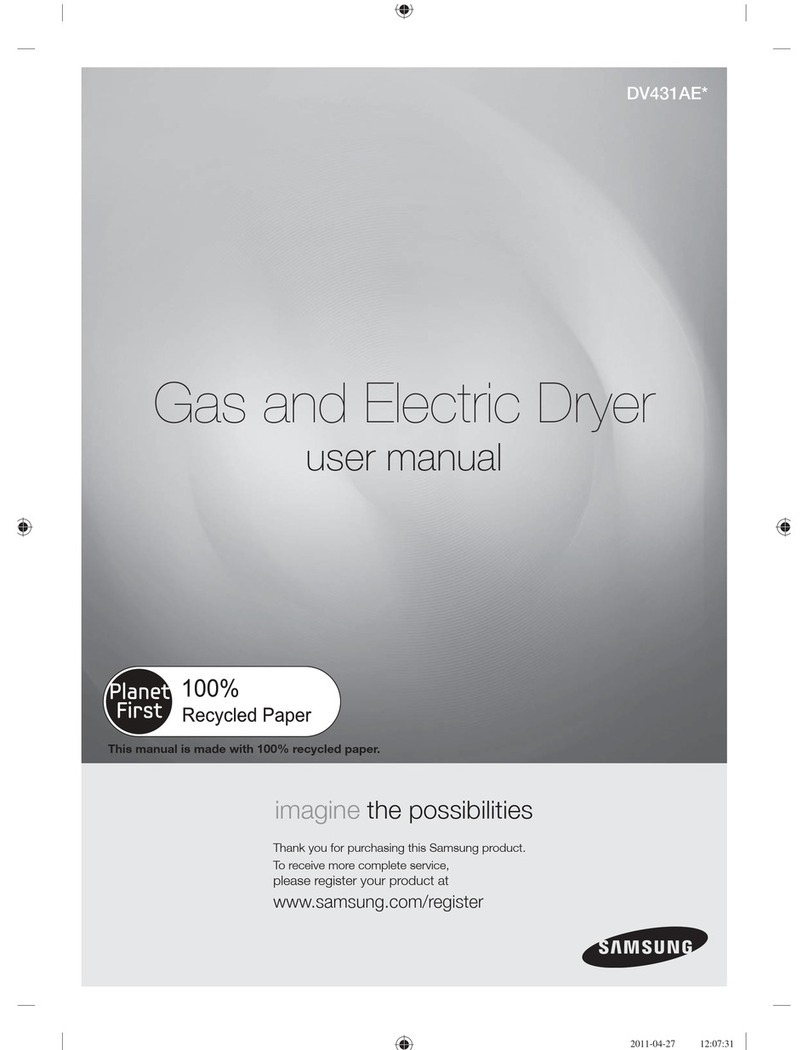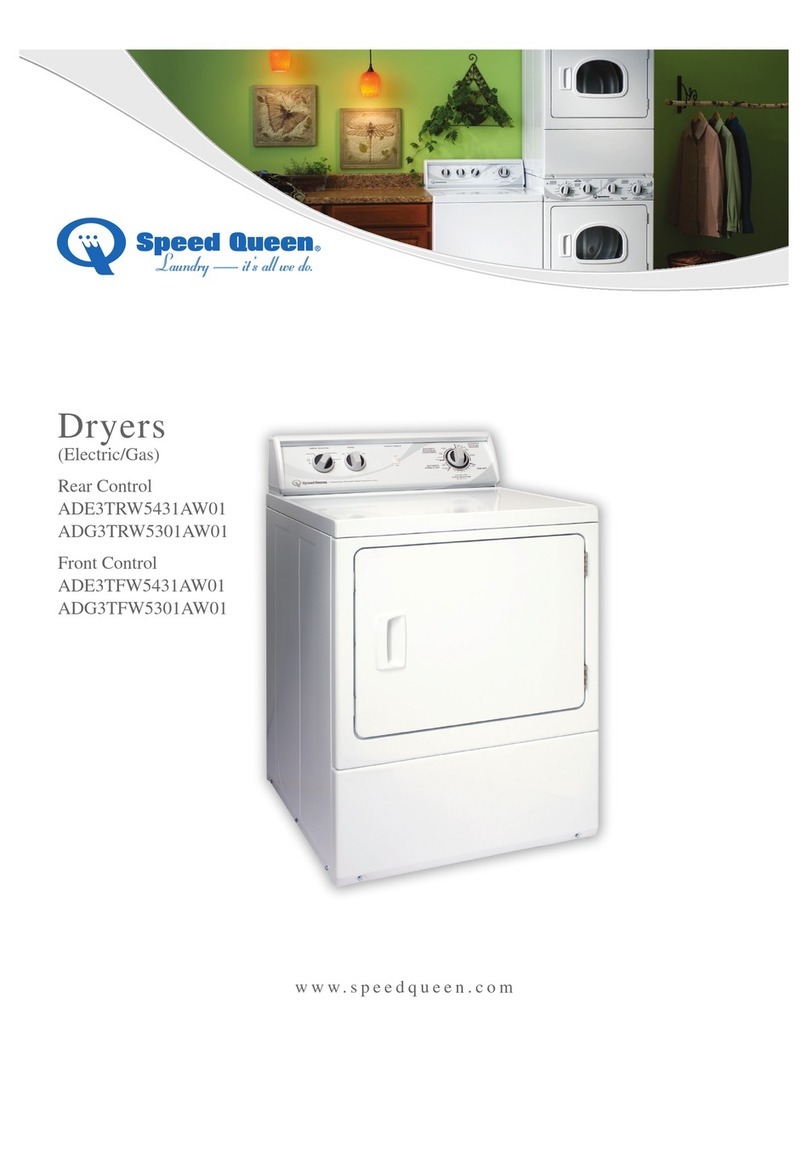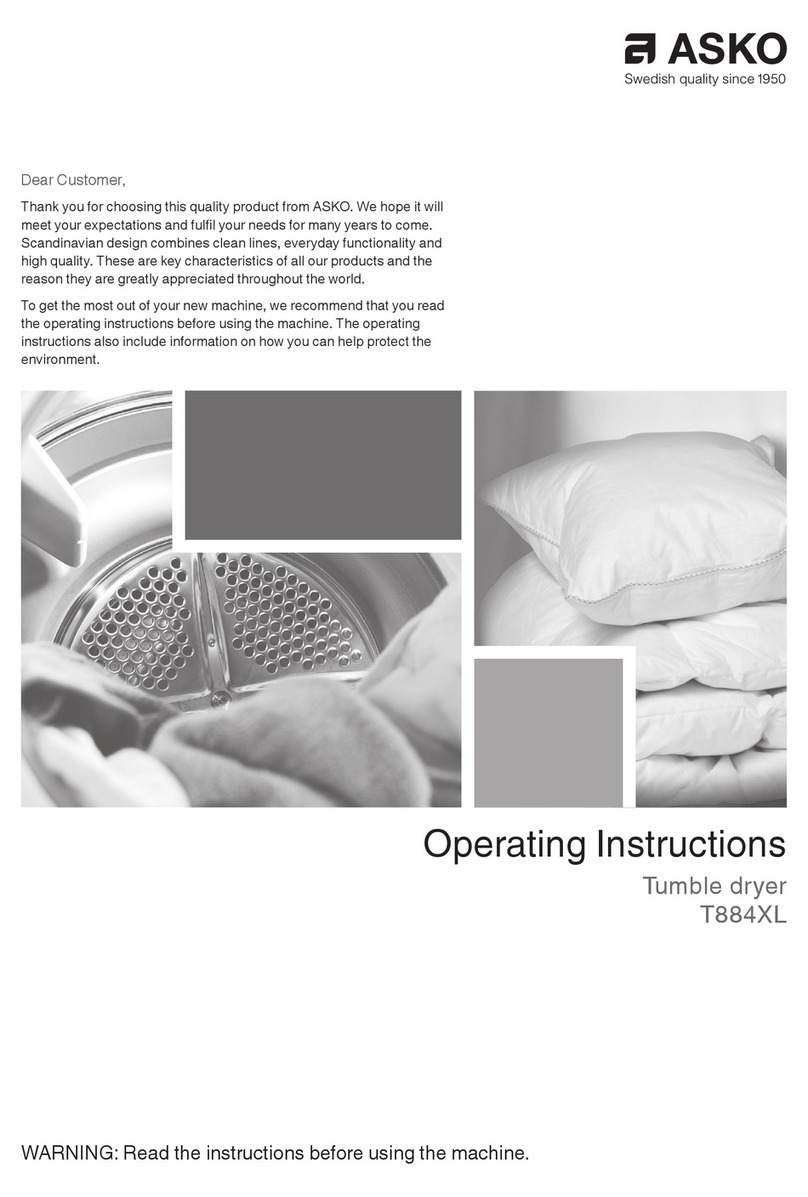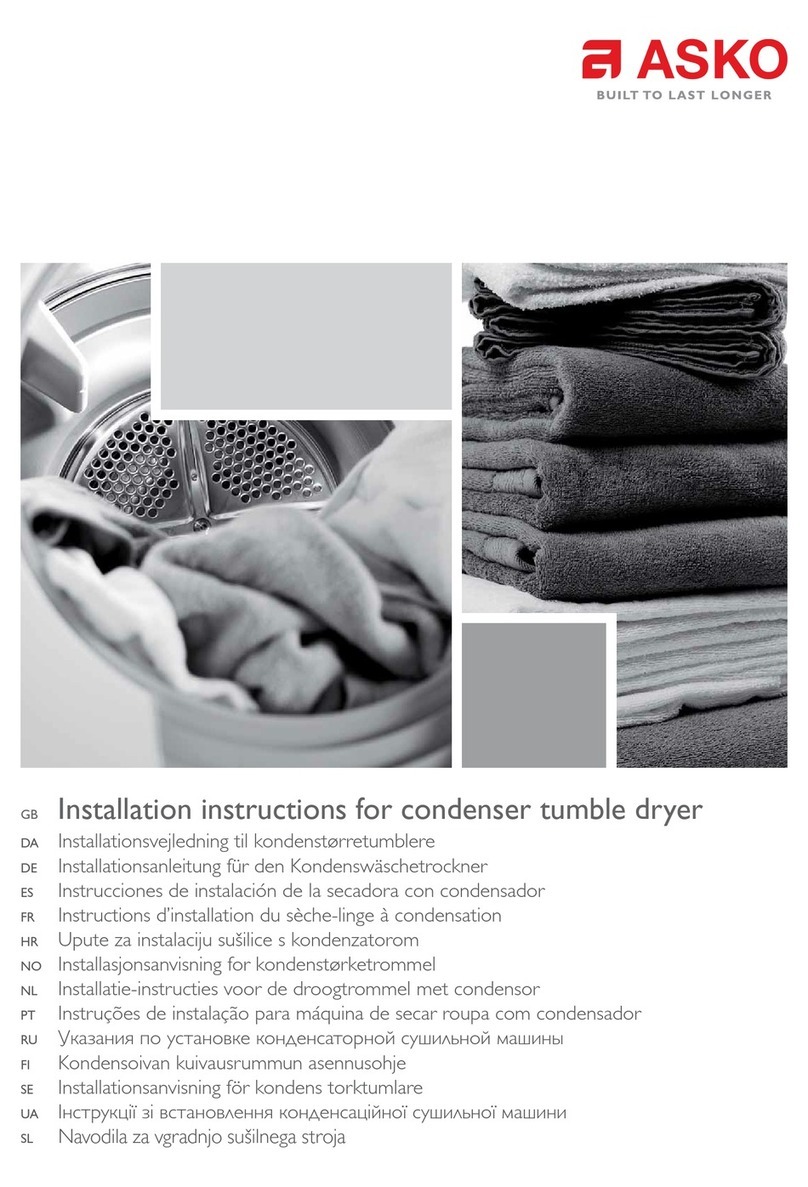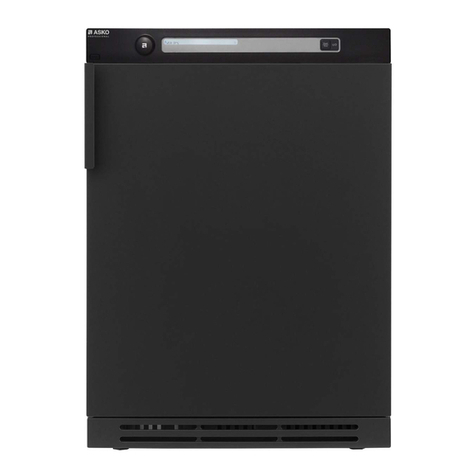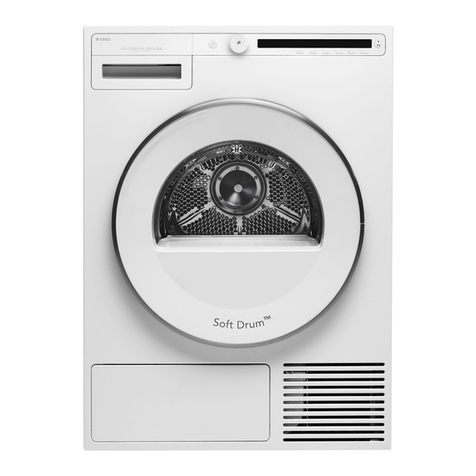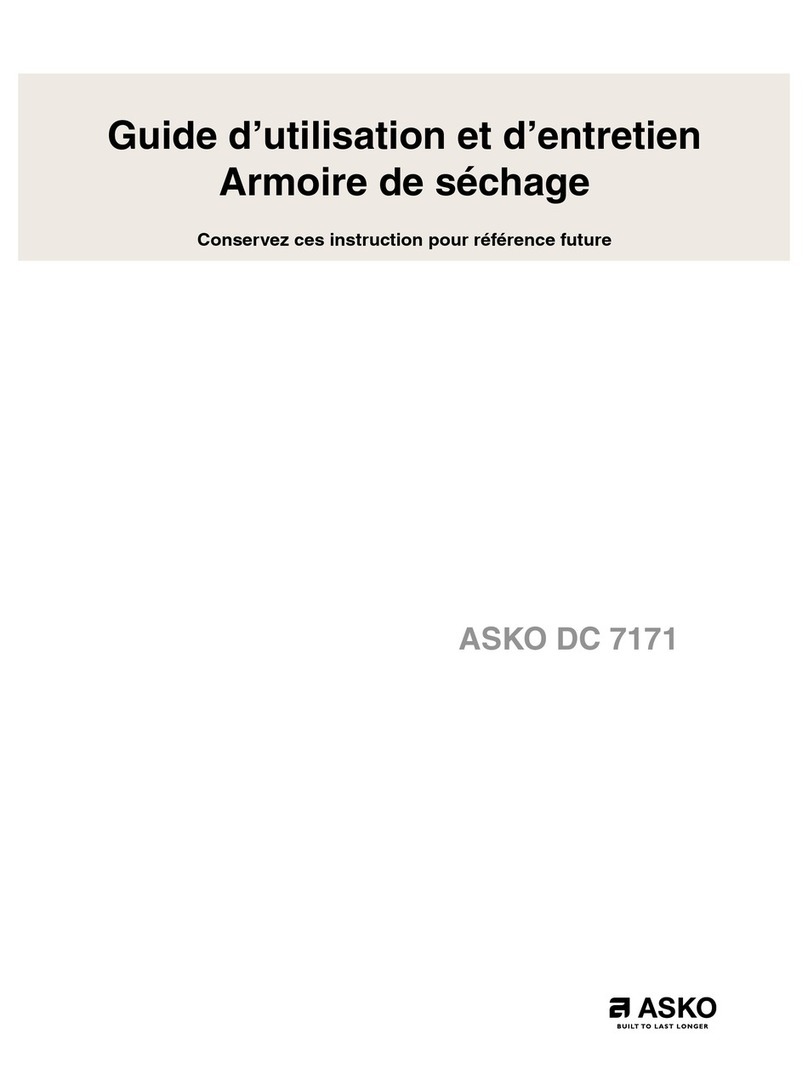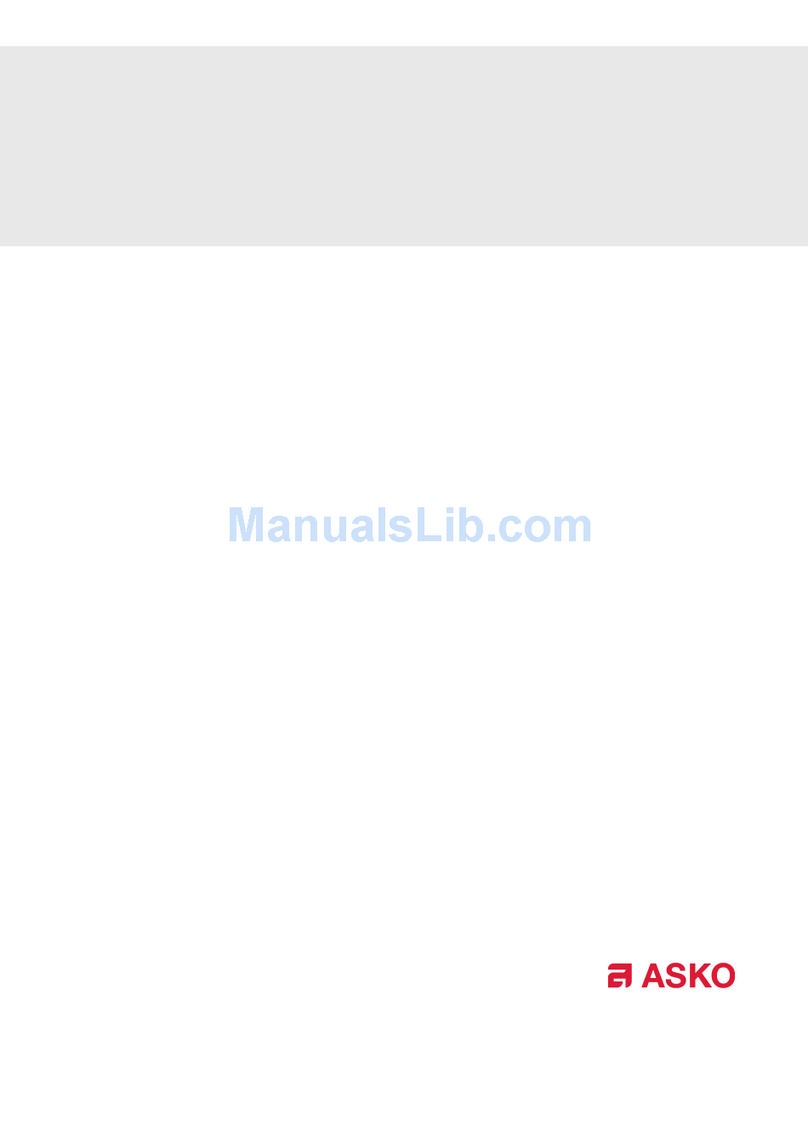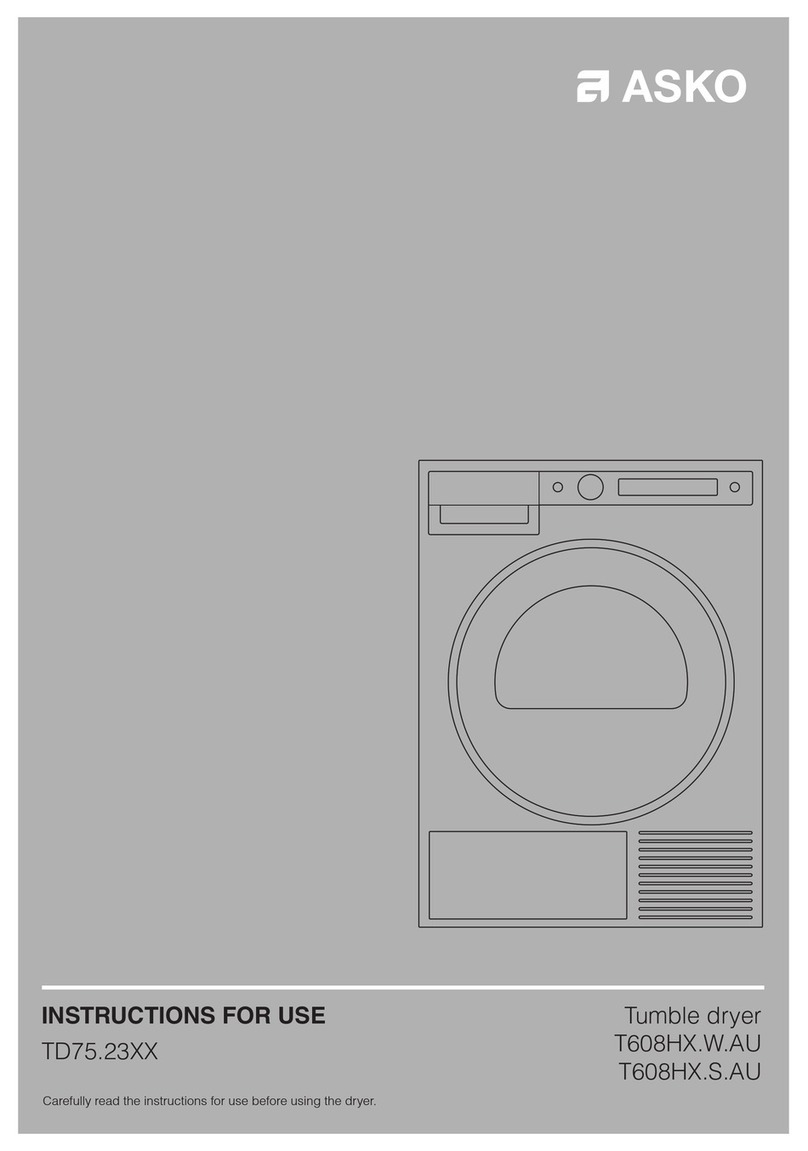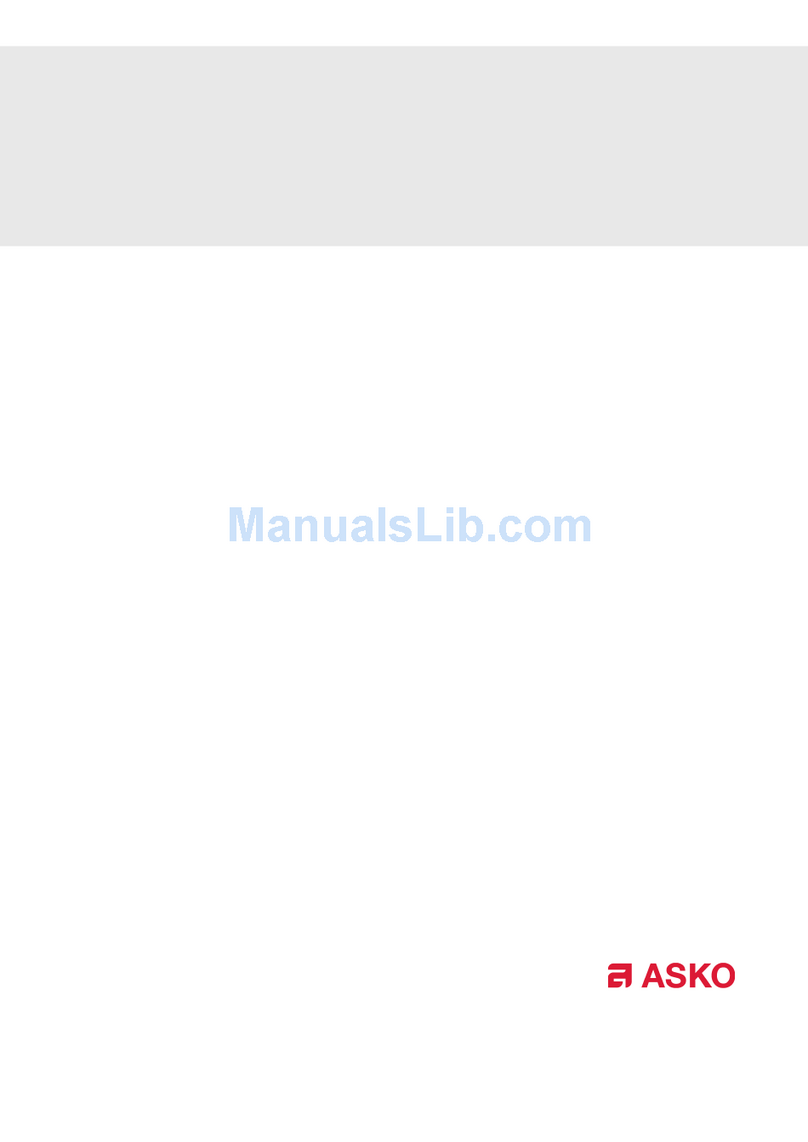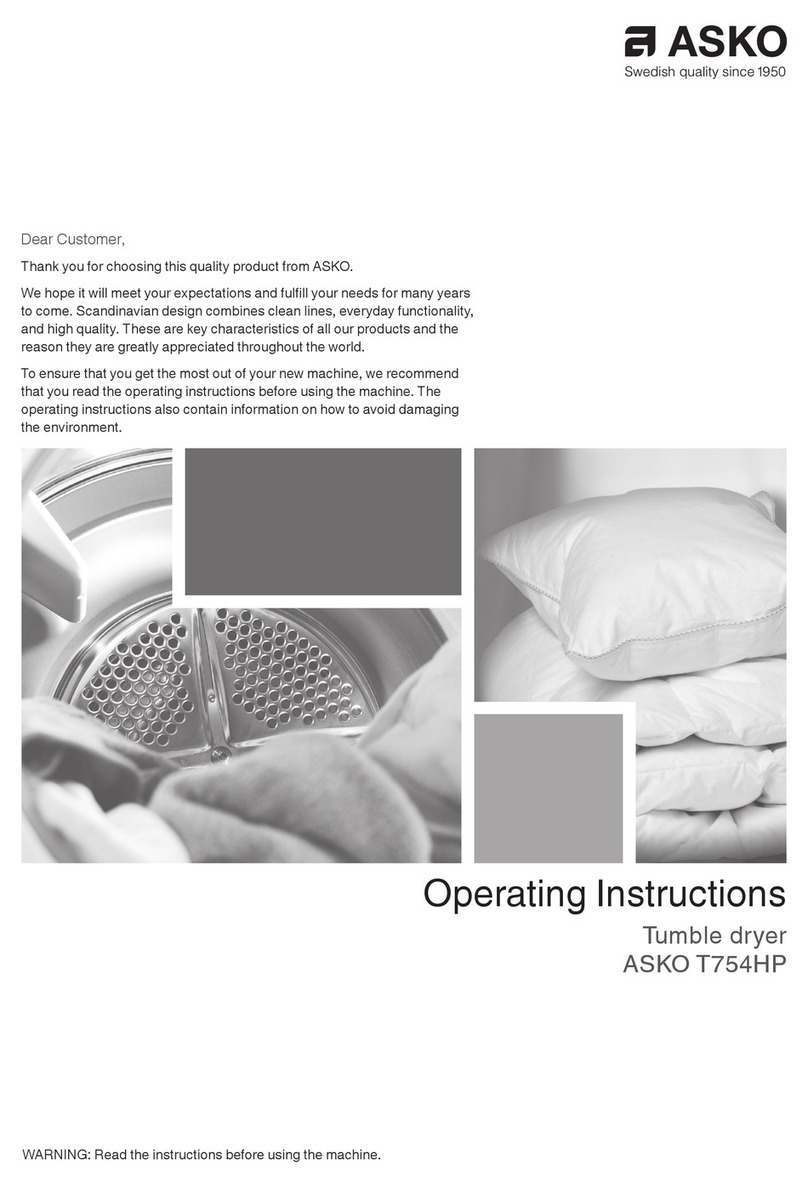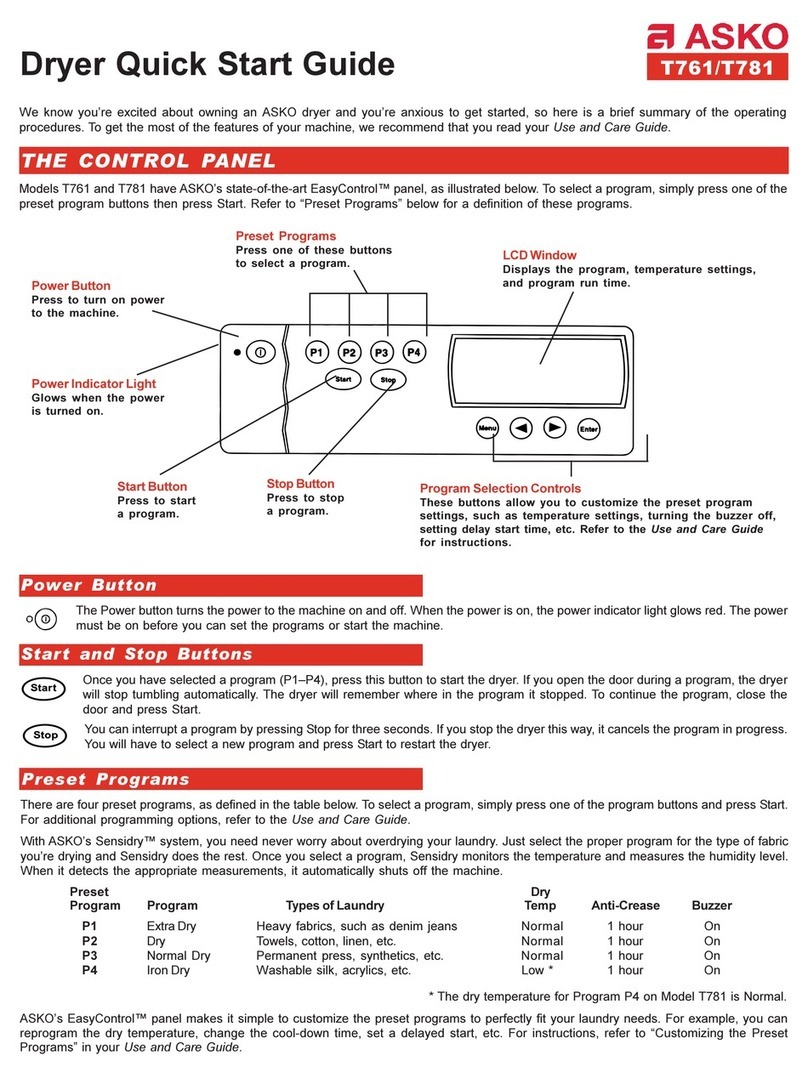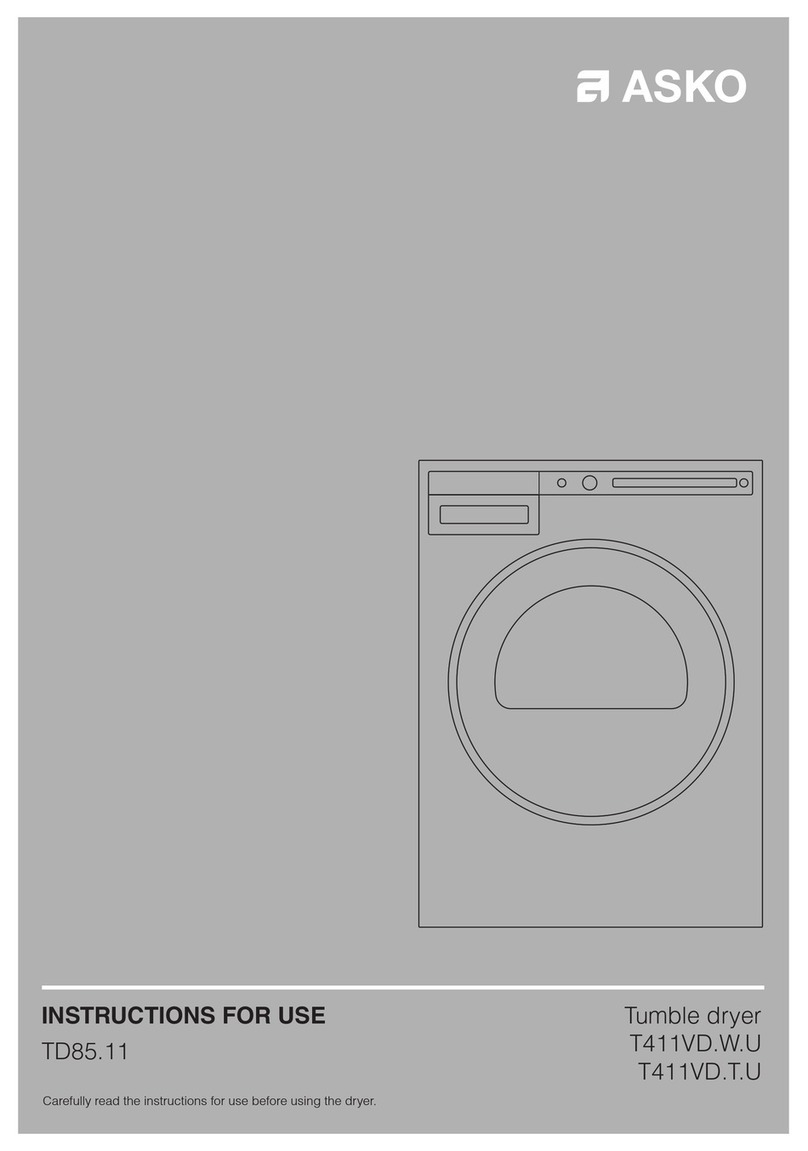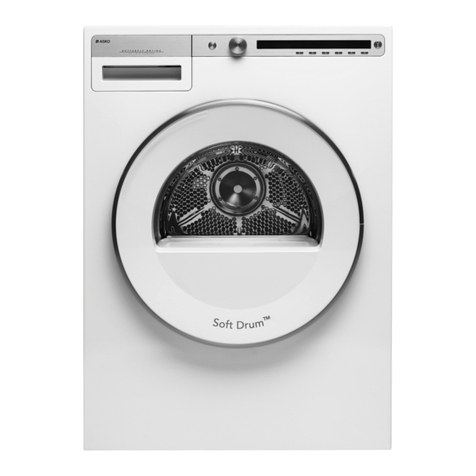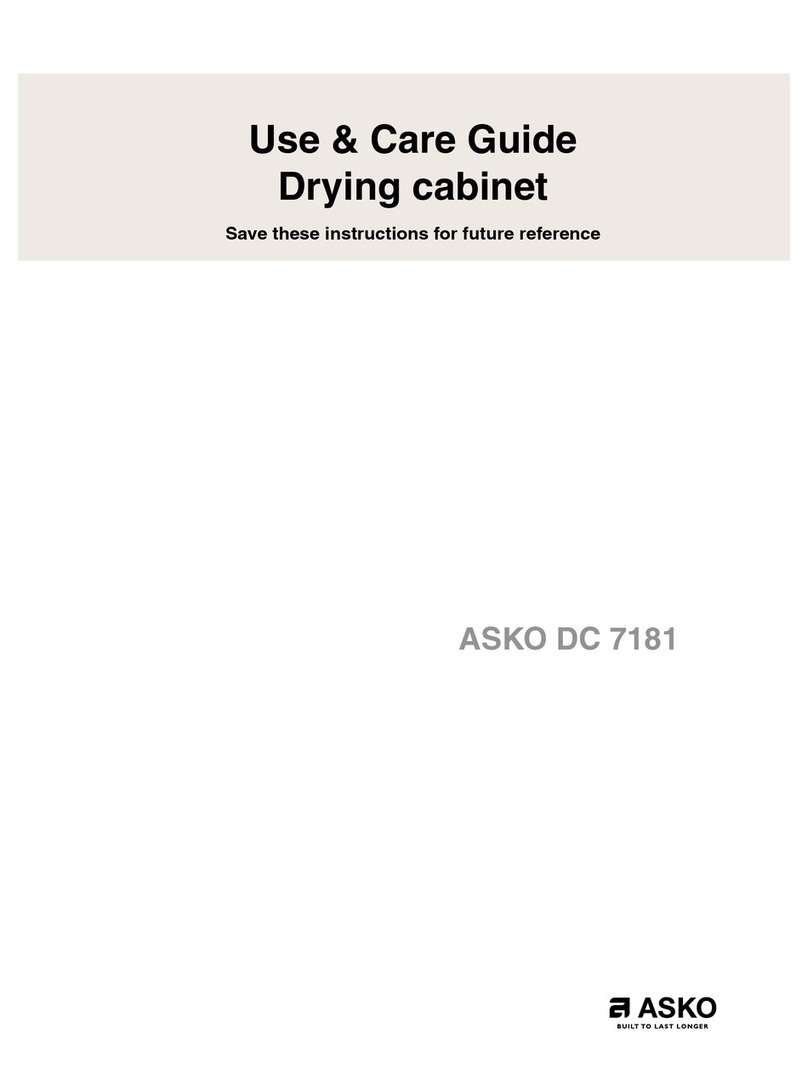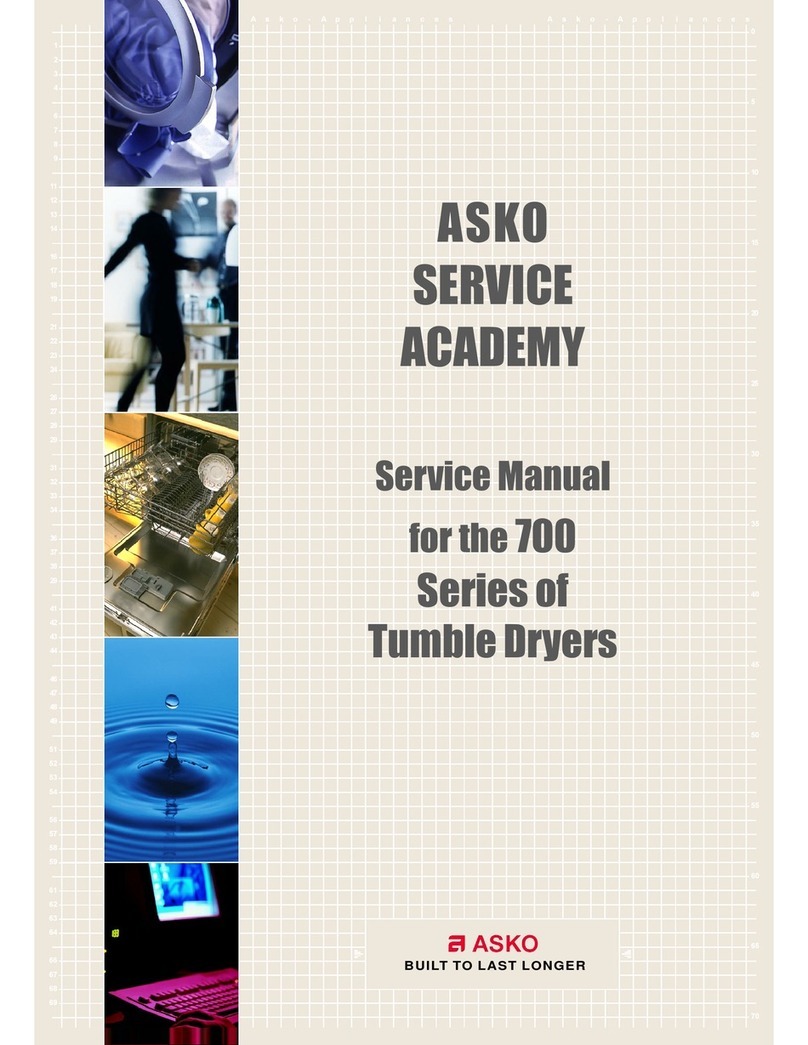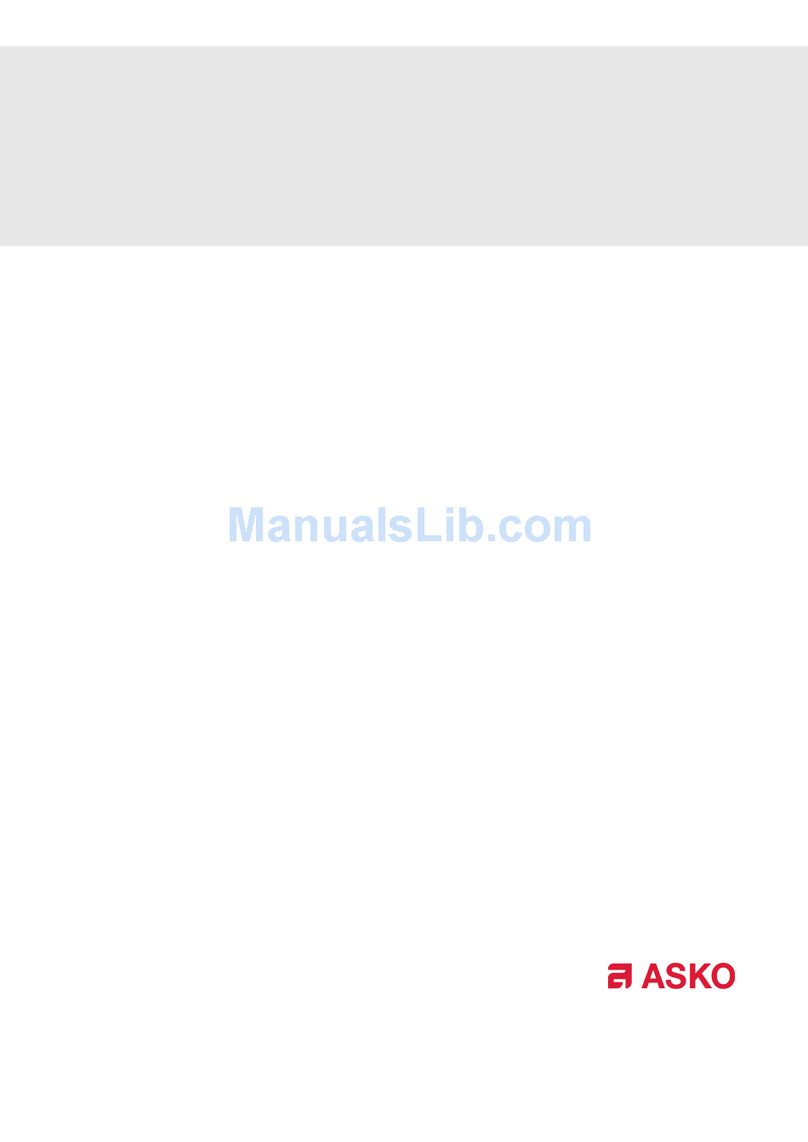
4
Read the operating instructions and
keep them in a safe place!
• Electrical installation, if required, should
be carried out by a qualified electrician.
• The machine should only be used for
tumble-drying as described in these
instructions.
• Repairs and maintenance relating to
safety or performance must be carried
out by a qualified professional.
• Damaged mains cables must only be
replaced by a qualified electrician.
• Sufficient ventilation is required to
prevent smoke from open fires or fumes
from equipment burning other fuels
being sucked into the room when the
tumble dryer is running.
• Do not dry dirty laundry in the tumble
dryer.
• Items that are stained with e.g. cooking
oil, acetone, alcohol, petrol, kerosene,
stain remover, turpentine, wax and wax
remover should be washed in hot water
with extra detergent before they go in
the tumbler dryer.
• Items such as foam rubber, latex,
plastic, waterproof textiles, rubber-
coated items and clothes and foam-
rubber filled cushions must not be dried
in the tumbler dryer.
• Fabric softener or similar products
should be used as per the
recommendations of the detergent
manufacturer.
• The machine is not designed to be
used by persons (even children) that are
physically or mentally handicapped or
lack experience and knowledge. Such
persons must receive instruction in how
to use the machine from the person
responsible for their safety.
• Children must be watched to ensure
they do not play with the machine.
Safety
• The machine must not be used for
drying items that have been dry-cleaned
at home or fabrics that may contain
residues of flammable liquids.
• The tumble dryer is not to be used if
industrial chemicals have been used for
cleaning.
• The tumble dryer is protected by an
overheating cut-out. This shuts offthe
machine if the temperature gets too
high.
WARNING!
When the tumble dryer is operating, the
back of the tumble dryer will get very hot.
Leave the machine to cool completely
before touching the back.
Installation
See the section Installation.
Packing material
Please sort waste materials in accordance
with local guidelines.
Recycling
This machine is manufactured and
labelled for recycling. In order to prevent
personal injury, the machine must be
made inoperable after deciding to take it
out of service. Contact your local authority
for information about where and how your
machine should be correctly recycled.
Safety instructions










